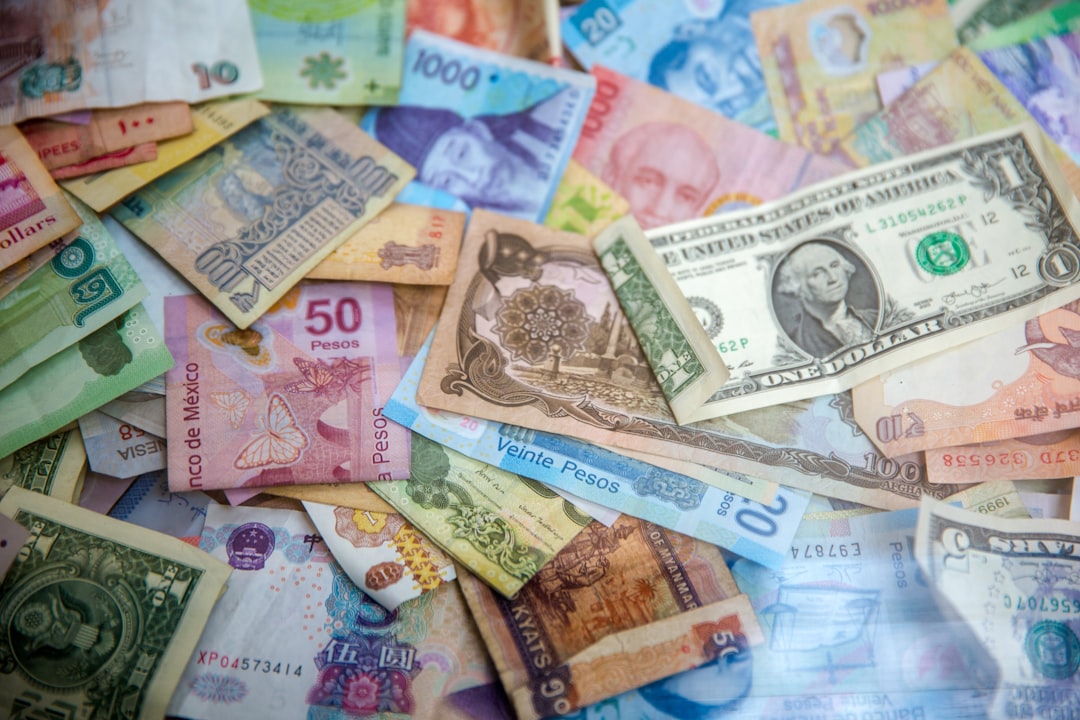Most people feel comfortable with the idea of reducing their costs and increasing their income to reach financial independence.
Improving your investment returns can feel a little bit strange and different to begin with. Don’t panic. It’s actually straightforward.

Why increase your investment returns?
To be financially independent, you should be able to live off the return from your net assets.
The better quality your investment returns, the more you can safely spend as a proportion of your net assets each year on all your bills.
What is the return on assets formula?
The return on assets consists of:
- Yield – any cash flow the asset pays you
- Capital gain rate – any increase (or decrease) in the market value over time.
Asset Return = Net Asset value multiplied by yield plus net asset value multiplied by capital gain rate
Here’s an example.
Teri buys an asset for $1000. Over one year, the asset pays Teri a yield of 4%, and makes a capital gain of 6%. Teri received a yield of – $1000 * 4% = $40 and a capital gain of – $1000 * 6% = $60. As a result, Teri made an overall asset return in the year of $40 + $60 = $100.
If Teri reinvested the yield in more asset, she would benefit from compound interest on the yield.
When you make a return on an asset, your net asset position increases without you having to earn an income.
What is my asset allocation?

Your asset allocation is what proportion of your total net assets is allocated to different types of asset.
For example, if you had total net assets of $100,000 – which included cash of $20,000, shares of $30,000 and bonds of $50,000 – your asset allocation would be 20% cash, 30% shares and 50% bonds.
Your asset allocation is vital to understand because each asset will produce a different asset return. For example, cash yield interest, bonds yield interest but also capital gains and losses, shares yield dividends and also capital gains and losses. Some assets are riskier than others.
There is a general principle that the lower risk an asset is, the lower the expected asset return.
What are the different types of net assets?
There are a number of different elements to net assets – with different expected behaviour regarding their asset return.
- Cash and Bank deposits
- Bonds
- Stocks and Shares
- Commodities, Precious Metals, Fine Art, Wine, Swiss Watches, etc.
- Foreign currencies
- Real estate and buy to let
- Personal use assets – your own home, car etc.
- Liabilities – loans, credit cards, mortgages, creditors
Below, we run through each element of net assets in turn. But first, we need to understand the safe withdrawal rate
What is the safe withdrawal rate?

The safe withdrawal rate is the proportion of your net assets you can safely withdraw each year and never run out of net assets.
The safe withdrawal rate is primarily dependent on your expected return on net assets, adjusted down to de-risk it for unexpected events.
For example, if you have net assets of $500,000 and it is calculated that based on your asset return you can safely spend $20,000 per year without ever running out of money, your safe withdrawal rate would be – $20,000 divided by $500,000 = 4%.
How do I calculate my safe withdrawal rate?
Your choice of asset allocation between cash, bonds, shares, commodities, real estate, foreign currencies etc will ultimately determine the nominal return on your investment.
But you can’t just plan to spend the expected gross return rates if you want to be financially independent for several reasons.
- Uncertainty – Net asset returns are not certain. Banks collapse, companies default, and governments can change their rules.
- Inflation – Inflation eats away at your returns. If your nominal return is 8% this year, but inflation was 2%, your REAL return was 6%. That’s 8% minus 6%. Real return equals nominal return minus inflation rate. The safe withdrawal rate needs to factor this in.
- Taxation – You may have to pay tax on your gross returns. There are ways to plan around this in most countries to limit or even eliminate the payment of tax. If you will have to pay tax, the safe withdrawal rate needs to factor this in to be accurate.
- Transaction costs – You pay transaction costs when you trade in any asset. The safe withdrawal rate should factor in any transaction costs to buy and sell your assets.
- Sequence of returns risk – expected net asset returns are normally presented as an annual average. I expect to get, on average, 8% return a year from my asset returns. However, stock markets are volatile. One year, they make a return of 21% and the next year a loss of 30%. The safe withdrawal rate is intended to anticipate the worst historical sequence of return.
Your safe withdrawal rate therefore needs to be a rate that has taken into account your asset allocation, the risk inherent in predicting future nominal returns, the risk from inflation, transaction costs and any tax you have to pay.
The good news is, there is a rule of thumb for estimating the safe withdrawal rate. We’ve seen it before. 4% has been assessed through several studies to offer a good starting point for estimating the safe amount to withdraw from your assets in order to remain financially independent for life.
The most important factor to understand during your accumulation phase is that the safe withdrawal rate assumes you keep your money in a low cost, index funds of shares and bonds. Looking back historically, this has been seen to be low risk. There is no guarantee it will be low risk in the future, but based on history, it is a consistently better choice than other asset mixes.
The more your asset allocation varies from a simple stock and bond mix, the more relying on the 4% rule of thumb may be a risk.
A really simple example to illustrate this is if you kept all your money in cash. As cash interest rates are so low currently and inflation is higher than cash interest, the amount you could safely withdraw from your net assets would be very low indeed. Rather than 4%, you may estimate it closer to 0.5% or less.
That would mean rather than needing 25 times your annual expenses to be financially independent, you would need (1/0.5%) = 200 times your annual expenses to be confident of being financially independent! You can see why I make a fuss about asset mix.
What return do you get from cash and bank deposit?
The most familiar return to you may be Interest. When you earn interest, a bank is paying you a reward because you have loaned the bank money.
See, when you put money into a bank account, you think are saving it. But, from the banks point of view, you are giving them a loan.
The interest rate dictates how much the bank will pay you annually for the loan.
So, if you save $100 at a 4% rate, the bank pays you $4 for your trouble.
Over time, interest rates change. As I write in 2020, interest rates are extremely low, meaning you get a very small amount paid to you for loaning your money.
What return do you get from investing in a bond?
It isn’t just banks that you can lend money to. You can also lend to companies and governments. This if normally called a bond.
With a bond, you receive an interest rate in exchange for loaning money to the company or government.
Normally, bonds have a fixed rate of interest, which is paid for a fixed period of time. During the period of the bond, you receive interest payments. At the end of the bond period, you get your money back (this is called the principal).
The interest is usually guaranteed unless the company or government go bankrupt.
Because people might want to get their money back before the principal is repaid, and other people would like to get access to the ongoing interest rate, there is a market for bonds. You pay to buy bonds previously issued from someone who has previously bought them.
Supply and demand means that the price of the bond may be different from the principal. This means that the value of your bonds may go up or down.
If the the bond value goes up, your net assets increase. If the bond value goes down, so does the value of your net assets. Remember, this is a “paper-profit” or “paper-loss” because no cash flows with these increase. Only when you sell the bond or the bond matures and you are paid back do your crystallise the gain or loss. That point is often called the capital gain or capital loss.
What return do you get from stocks and shares?

When you buy shares in a company, you are giving the company money to invest in their business. In exchange, the company can choose to pay you a dividend. A dividend is simply a discretionary payment from a company to its shareholder. Unlike interest on bonds, the company can choose whether or not to pay a dividend.
But, as the company is owned by its shareholder, the company normally has a strong incentive to pay a regular dividend.
Share prices go up and down because some people want access to the dividends and future value of the shares, and others want access to the current market value of the shares. It’s another example of supply and demand.
Similar to bonds above, you make a “paper-gain” or “paper-loss” when the share price goes up or down, and so your net assets go up or down. Only when you sell your shares, do you have a cash flow and so crystallise the value of the shares.
What return do you get from investing in commodities, fine art, wine and precious metals?

There are many assets that do not pay interest or dividends, but do increase (and decrease) in value.
Gold is a great example of this. If you buy gold today, the gold is exactly the same physical item in a years time. However, the market value will have changed.
The same is true of any commodities, fine art, wine, watches, star wars toys etc. None pay a return or yield, but they all may increase (or decrease) in value.
What return do you get from investing in foreign currency?

The value of one currency against another is determined by the exchange rate.
Over time, one currency is able to buy more of another currency. We say it gets stronger.
For example, if my US dollar can buy more British Pounds, the dollar has strengthened against the pound.
When you buy an overseas currency, the value of your asset will go up or down with the exchange rate. You don’t receive any agreed interest or dividend. You just benefit or lose from the change in the relative prices.
For example, if I have $100 and use this to buy £80, the exchange rate would be 1 USD : 0.8 British Pounds. If, in a years time, the exchange rate has moved to 1 USD : 0.7 British Pounds, I can transfer my £80 back into dollars. Rather than getting $100 back, I receive $114. ( This is calculated as 1 USD divided by 0.7 British Pounds multiplied by £80).
As a result I’ve made a gain of $14 over a year, which is a 14% annual return.
In general, unless you are a sophisticated investor, avoid investing in currency, because the change in value is unpredictable and there is no yield or coupon to offset this risk.
What return do you get from investing in real estate and buy to let?
Buying properties to rent out or refurbish can generate cash flow from the rental income, and increase (or decrease) in value from changes in the market price.
What return do you get on your own home?

We have included the value of your home in your Net Assets. This is correct because your home has a substantial market value. What’s more, owning a home saves you the cost of renting. You don’t have to pay rent if you own house.
But, normally it does not produce dividends or interest, and for most people you cannot access the cash associated with it.
As a result, it could lead to a very confused picture to financial independence if you followed the Financial Independence Formula rule of thumb.
Let’s say the only asset you own is your house, and your house is worth $1 million. You see that you have personal expenses of $40,000 a year. So, using the formula, you multiply $40,000 by 25, which equals $1million. In celebration, you declare yourself financially independent. The next day you quit your job, but then are very confused to find you have zero money in your bank account.
What has gone wrong here?
You house is an asset but the funds are locked away. But you have used a 4% safe withdrawal rate, when really you should have used 0% for this asset.
You do still benefit in the equation by owning the house because your annual expenses are significantly lower than somebody who rents, so it is not a mistake to own the house but it is not contributing to your safe withdrawal rate.
The same is true of your car. It contributes nothing to your safe withdrawal rate.
The simple way is to take you net assets and then deduct any asset that is not giving you a financial return – mainly your car and your own home.
This gives us a revised Financial Independence Equation. It’s not all your net assets to include, but only your investment assets, and all liabilities.
What return do you get on liabilities?
To calculate your net assets, you net (deduct) your liabilities off against your assets.
The most common liabilities you may have are credit cards, bank loans, amounts owed to creditors, student loans, car loans and mortgages.
All liabilities need to be paid back eventually. As a result, they should be included in your FI calculation.
Where the liabilities attract interest, they may skew your safe withdrawal rate. Personal debt does not normally change with market value. But some debt attracts very low interest rates, like mortgages and interest-free credit cards. Other debt attracts huge interest rates like pay-day loans.
Many people plan to have cleared their major debts before they reach financial independence.
Key takeaways
- Your asset allocation will determine your nominal return on assets, and is a key component of the safe withdrawal rate.
- The safe withdrawal rate is an amount of your total net assets that could be spent annually whilst minimising the risk of running out of net assets during your lifetime.
- As a rule of thumb, assume a safe withdrawal rate of 4%.
- Holding a large basket of stocks and bonds in a low cost index fund has been shown historically to deliver a safe withdrawal rate of 4%.
Key actions
- Decide on your asset allocation strategy
- If your asset allocation strategy is not stocks and bonds, you may have to decrease your safe withdrawal rate.
What’s next?
Now, you’re ready to secure your assets.